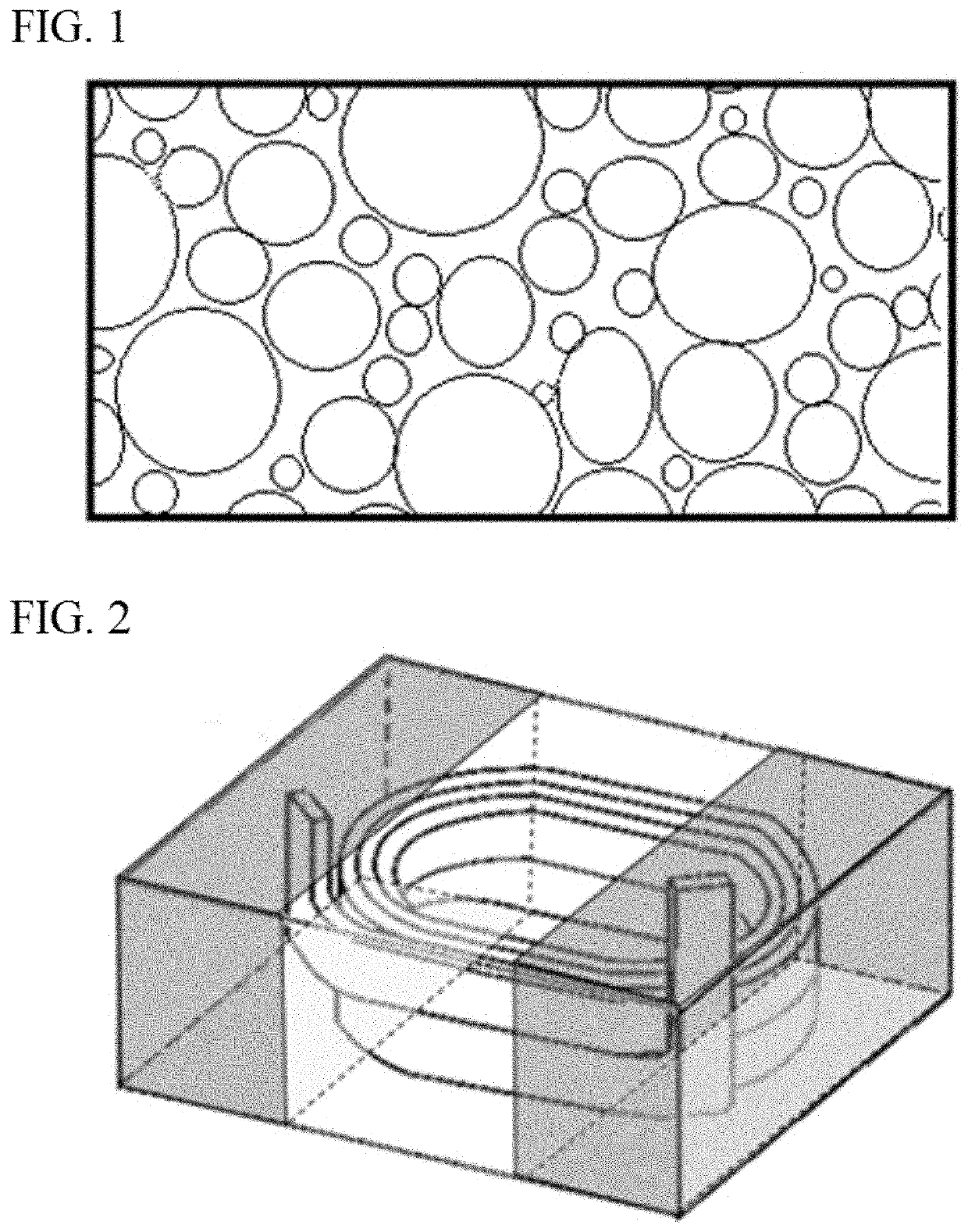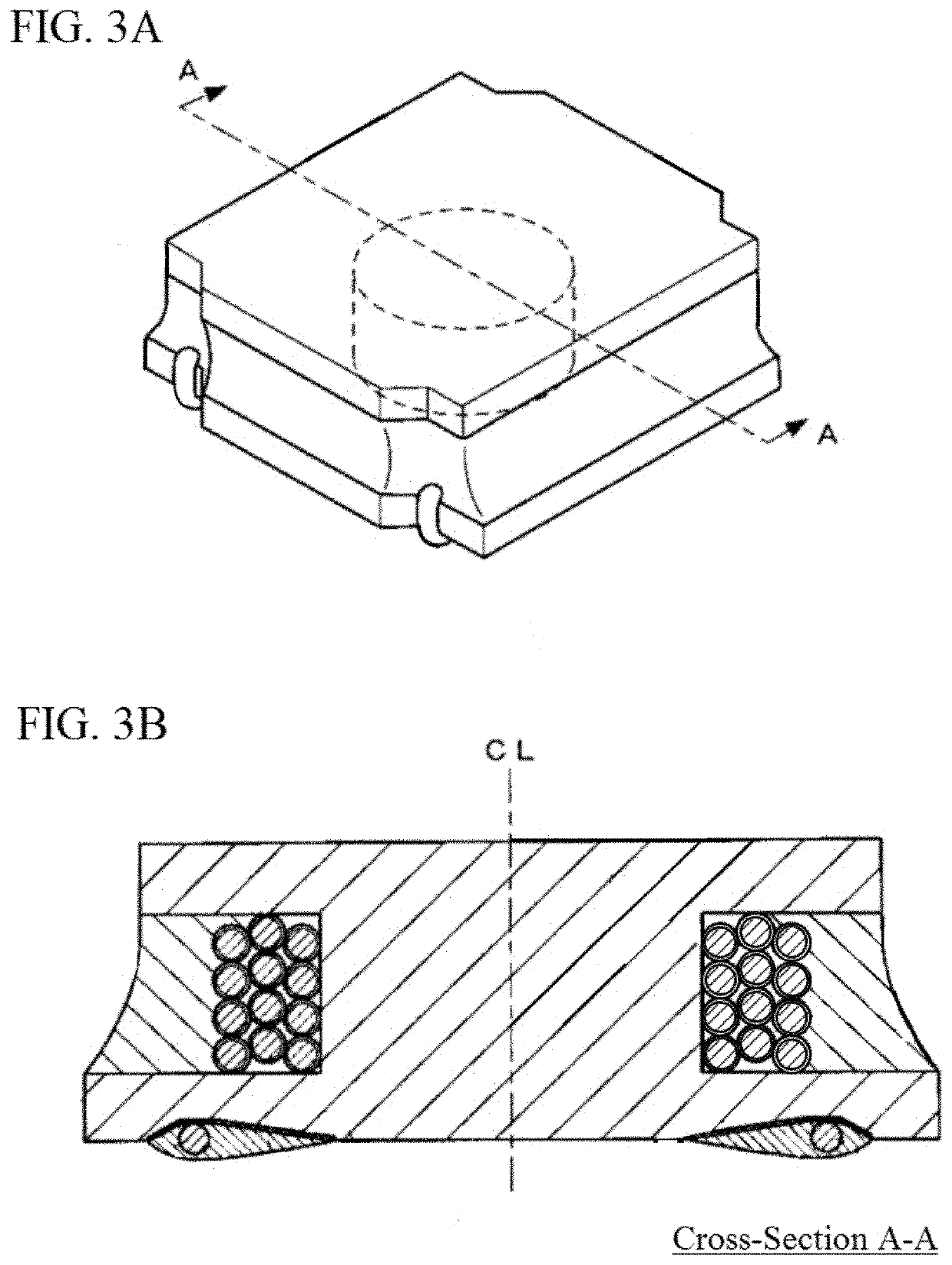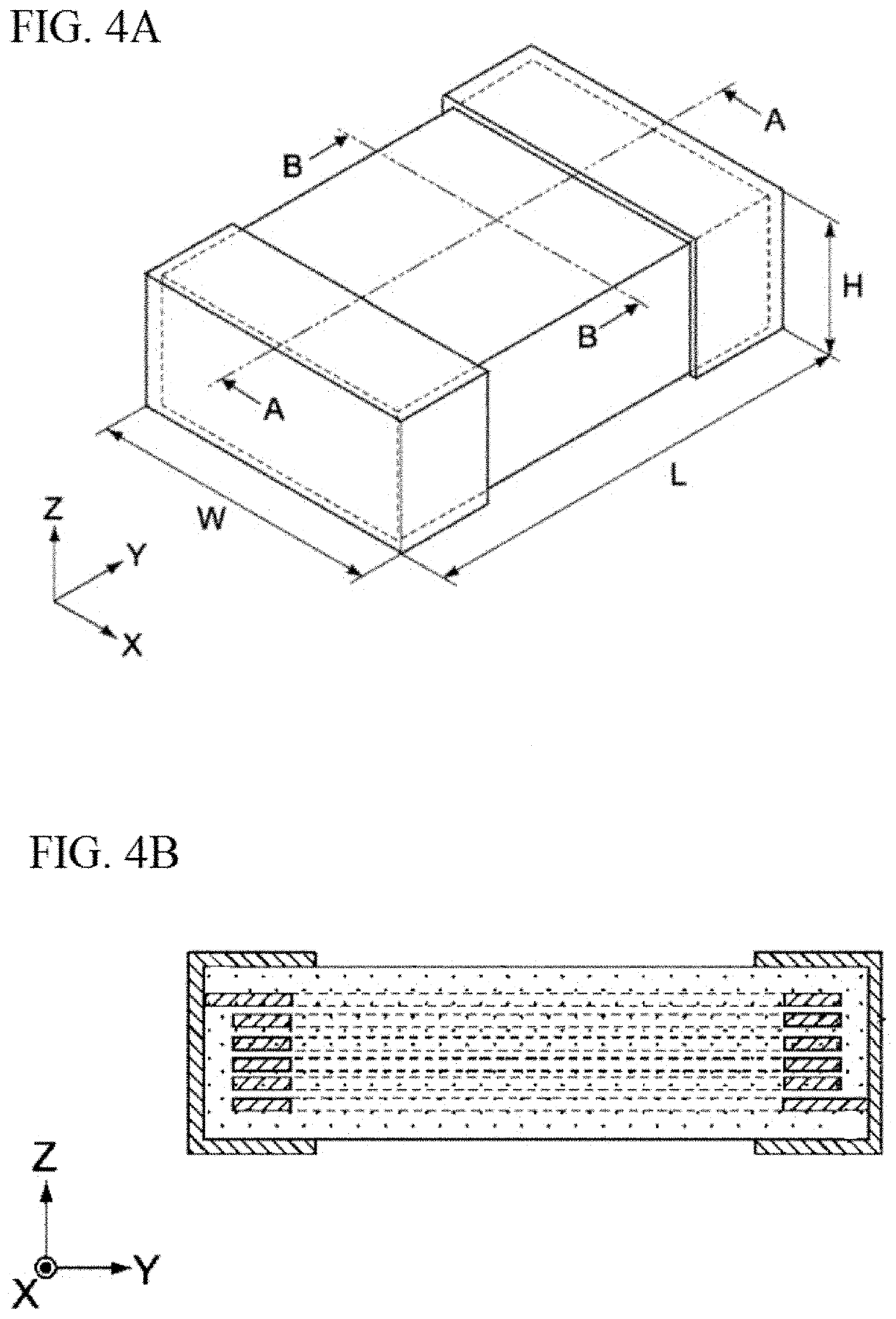Soft magnetic alloy powder and method for manufacturing same, as well as coil component made from soft magnetic alloy powder and circuit board carrying same
- Summary
- Abstract
- Description
- Claims
- Application Information
AI Technical Summary
Benefits of technology
Problems solved by technology
Method used
Image
Examples
example 1
[0094](Manufacturing of Soft Magnetic Alloy Powder)
[0095]First, a material powder of soft magnetic alloy having a composition of Fe-3.5Si-1.5Cr (the numerical values indicate percent by mass) and an average grain size of 4.0 μm was put in a container made of zirconia, and placed in a vacuum heat treatment furnace.
[0096]Next, the interior of the furnace was evacuated to an oxygen concentration of 100 ppm, and then its temperature was raised to 700° C. at a rate of rise in temperature of 5° C. / min, and held at that level for 1 hour to perform heat treatment, after which the furnace was cooled to room temperature, to obtain the soft magnetic alloy powder pertaining to Example 1.
[0097](Measurement of Element Distributions in Soft Magnetic Alloy Powder)
[0098]When the obtained soft magnetic alloy powder was measured for percentage by mass of each element in the alloy part and oxide film according to the aforementioned method, the concentration distributions shown by the solid lines in FIG...
example 2
[0116]The soft magnetic alloy powder pertaining to Example 2 was obtained in the same manner as in Example 1, except that a material powder of 2.2 μm in average grain size was used and the oxygen concentration of the heat treatment atmosphere was adjusted to 5 ppm.
[0117]When the obtained soft magnetic alloy powder was measured for percentage by mass of each element in the alloy part and oxide film according to the same method in Example 1, concentration distributions similar to those in Example 1 presented.
[0118]Also, when the obtained soft magnetic alloy powder was measured for specific surface area S, average grain size D50, and tap density dT according to the same methods in Example 1, the results were S=0.80 m2 / g, D50=2.2 μm, and dT=3.9 g / cm3.
[0119]Furthermore, when the characteristics of the obtained soft magnetic alloy powder, formed into a magnetic body, were evaluated for specific magnetic permeability and volume resistivity according to the same methods in Example 1, the sp...
examples 3 to 6
[0134]The soft magnetic alloy powders pertaining to Examples 3 to 6 were obtained in the same manner as in Example 1, except that a material powder of a different grain size was used.
[0135]When the obtained soft magnetic alloy powders were measured for percentage by mass of each element in the alloy part and oxide film according to the same method in Example 1, concentration distributions similar to those in Example 1 presented for all examples.
[0136]Also, the obtained soft magnetic alloy powders were measured for specific surface area S, average grain size D50, and tap density dT according to the same methods in Example 1. The obtained results are summarized and shown in Table 1.
PUM
| Property | Measurement | Unit |
|---|---|---|
| Temperature | aaaaa | aaaaa |
| Fraction | aaaaa | aaaaa |
| Fraction | aaaaa | aaaaa |
Abstract
Description
Claims
Application Information
 Login to View More
Login to View More - R&D
- Intellectual Property
- Life Sciences
- Materials
- Tech Scout
- Unparalleled Data Quality
- Higher Quality Content
- 60% Fewer Hallucinations
Browse by: Latest US Patents, China's latest patents, Technical Efficacy Thesaurus, Application Domain, Technology Topic, Popular Technical Reports.
© 2025 PatSnap. All rights reserved.Legal|Privacy policy|Modern Slavery Act Transparency Statement|Sitemap|About US| Contact US: help@patsnap.com



